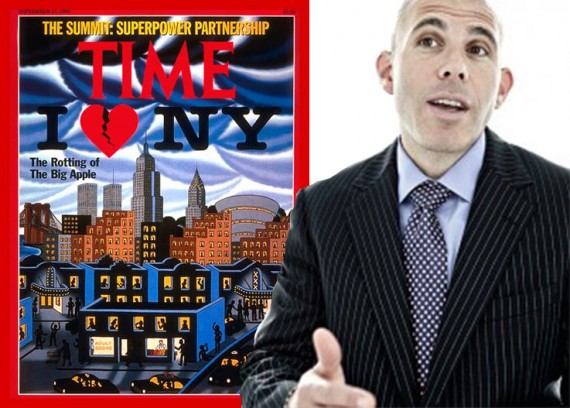Scott Rechler keeps the September 1990 issue of Time magazine in his office to remind himself “how bad things can be.” The cover story of that issue, “The rotting of the Big Apple,” highlighted how dismal a place New York City was back then — in contrast to now.
“New York’s doing great,” the CEO of RXR Realty said during his keynote address at the Marcum Real Estate Forum at 730 Third Avenue Thursday night. “But as I said, there are breaking points where it could go the other way – we’ve been that way before.”
Rechler recently stepped down from his position as the vice chairman of the Port Authority of New York and New Jersey, where he oversaw the redevelopment of the World Trade Center site. He joked with the crowd that when Gov. Andrew Cuomo appointed him to the role in 2011, “he didn’t really explain to me the Port Authority was some sort of combination of Boardwalk Empire and Scandal in terms of what goes on there.”
Rechler focused primarily on the need for increased capacity in the city to accommodate the growth in population and jobs. New York is still facing an office shortage he said, and millenials entering the workforce demand a very different product.
“When I went to see the Starrett-Lehigh building (a building RXR owns at 601 West 26th Street), I got out of the car and I thought I was at the wrong address,” Rechler said. “This is not what we were used to as Class-A office buildings.”
Rechler said some of his tech tenants, among others, are doubling their office space, not only because they’re growing but because they’re closing offices in other cities and chasing the talent to New York.
The Time cover reminds him, Rechler said, that keeping New York competitive will require major public and private investment. RXR has made major office bets over the past two years, including 1285 Sixth Avenue in Midtown and 47 Hall Street in Brooklyn. The firm is also taking on its first ground-up residential project, at 810 Fulton Street in Brooklyn.
Retail real estate, however, is facing much greater challenges, he said. Retailers have to invest in design to draw consumers in or risk losing even more of them to Amazon and other e-commerce stores. “Why do people go to a shopping center? Why do people go to a mall today? They do it for the experience,” he said. In July, The Real Deal took an in-depth look at the potential vulnerabilities in the city’s retail market.
Rechler also said that while suburban development would help mitigate the housing shortage, office space in the burbs is doomed. “There is no floor to how low their rents can go,” he said. “They’re competitively obsolete.”
